France has at least three great white mute birds in various locations. There are swans in Paris, storks in Alsace and Egrets on the coast. All three of these birds have been commemorated on postage stamps.
Swans in Paris
In 1676 Louis XIV brought in several couples of swans from Denmark to decorate the banks of the Seine and several basins in the Royal châteaux. The Maquerelle Island in the Seine near the Champs de Mars was chosen for the swan’s new home. The island was soon renamed the “Ile des Cygnes”. In October of the same year the king signed an ordinance to strictly to prohibit troubling their peace and quiet. River boatman had to stay away from the island and no one was allowed to walk there. The fine was quite steep for stealing eggs or harassing the birds.
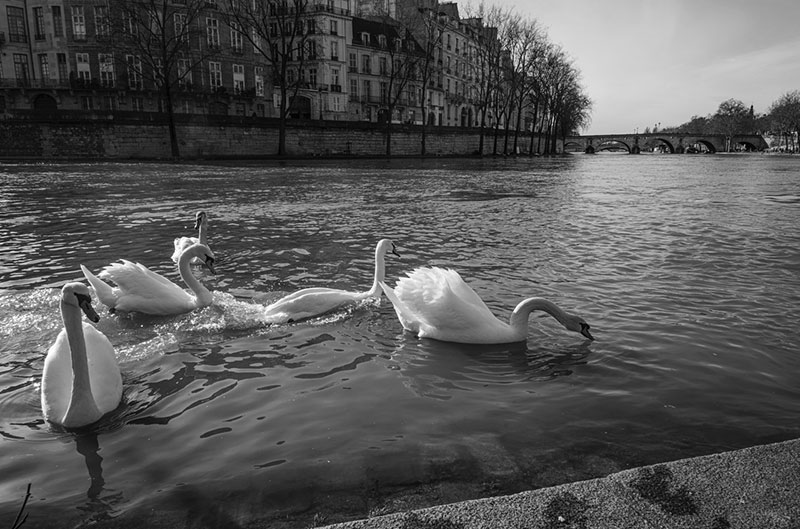
Photo ©Judith Bluysen @luluparee
By 1678, only two years later, there were 150 swans. Clearly, the swans liked their new space. Guardians were put into place to protect the swans along the Seine from Charenton to Poissy.
Later the original Ile of the Swans was attached to the banks of the Seine by filling in the water with trash! The Ile des Cygnes that we know today is a man-made strip built in the 19th century for industrial use. Under Baron Haussmann it was redesigned as a promenade. About a kilometer long and 11 meters wide, lined with red oaks from America and Japan, with benches and street lamps it is still a sweet and relatively cool spot for a quiet stroll in the city. Today, however, poplars, willows and ash trees dominate. It is open 24 hours and is only crowded on the 14th of July. A replica of the Statue of Liberty was installed on the south end of Swan Island in 1889. In the 20th century, the island hosted jousts, fishing competitions and other activities which contributed to its playful reputation. Once they even dreamed of making it an airstrip!
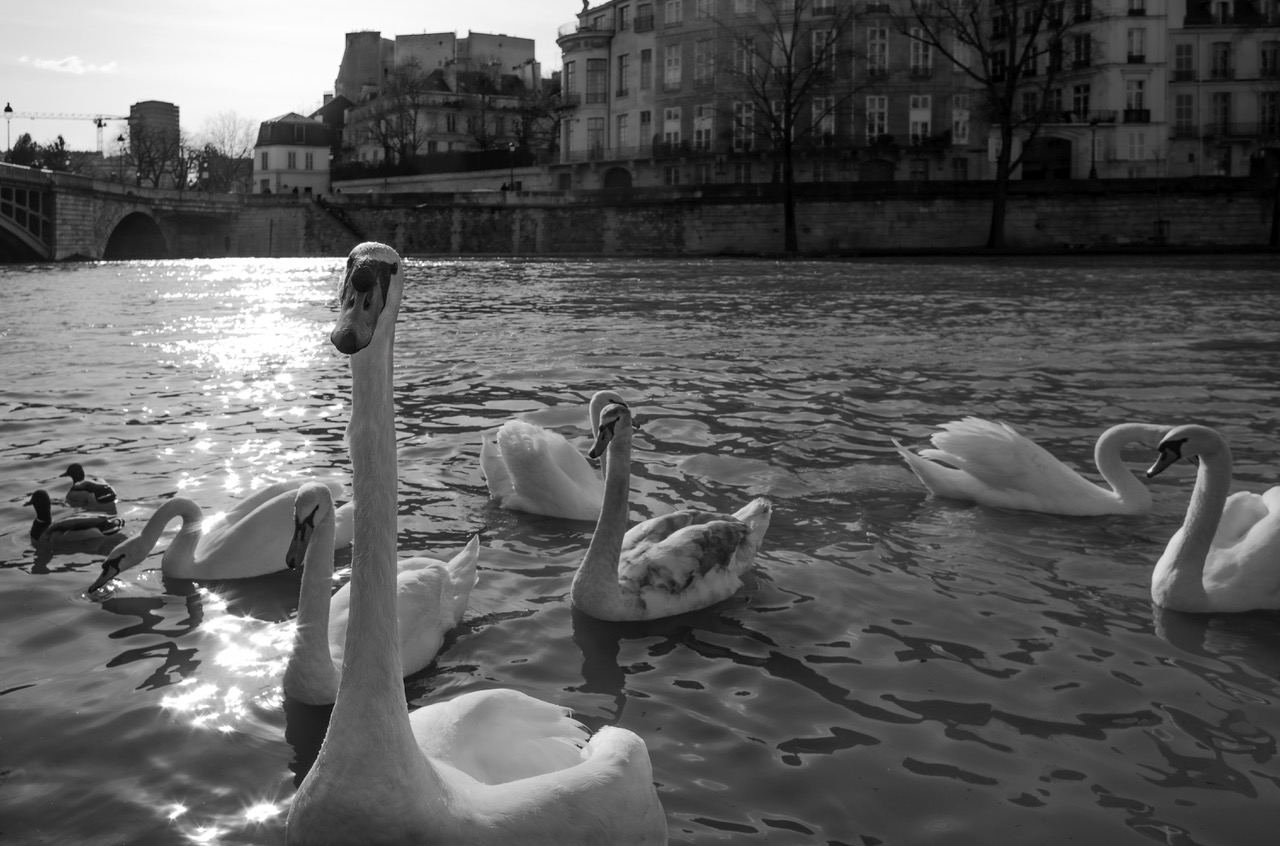
Photo ©Judith Bluysen @luluparee
There are about 12 species of swans, but the ones in Paris and Versailles are mute swans cygnes tuberculés in French. The French word refers to the protuberance -more or less large, located between their two eyes, at the top of their beak – called a tuber. The tuber is particularly prominent on the males.
In English the male swan is called a cob and the female a pen. Babies are cyngets.
In French a male is simply cygne, the female is une cygnesse but it is a rarely used term. Les petits du cygne sont appelés cygneaux, mais aussi parfois cygnets ou cygnons.
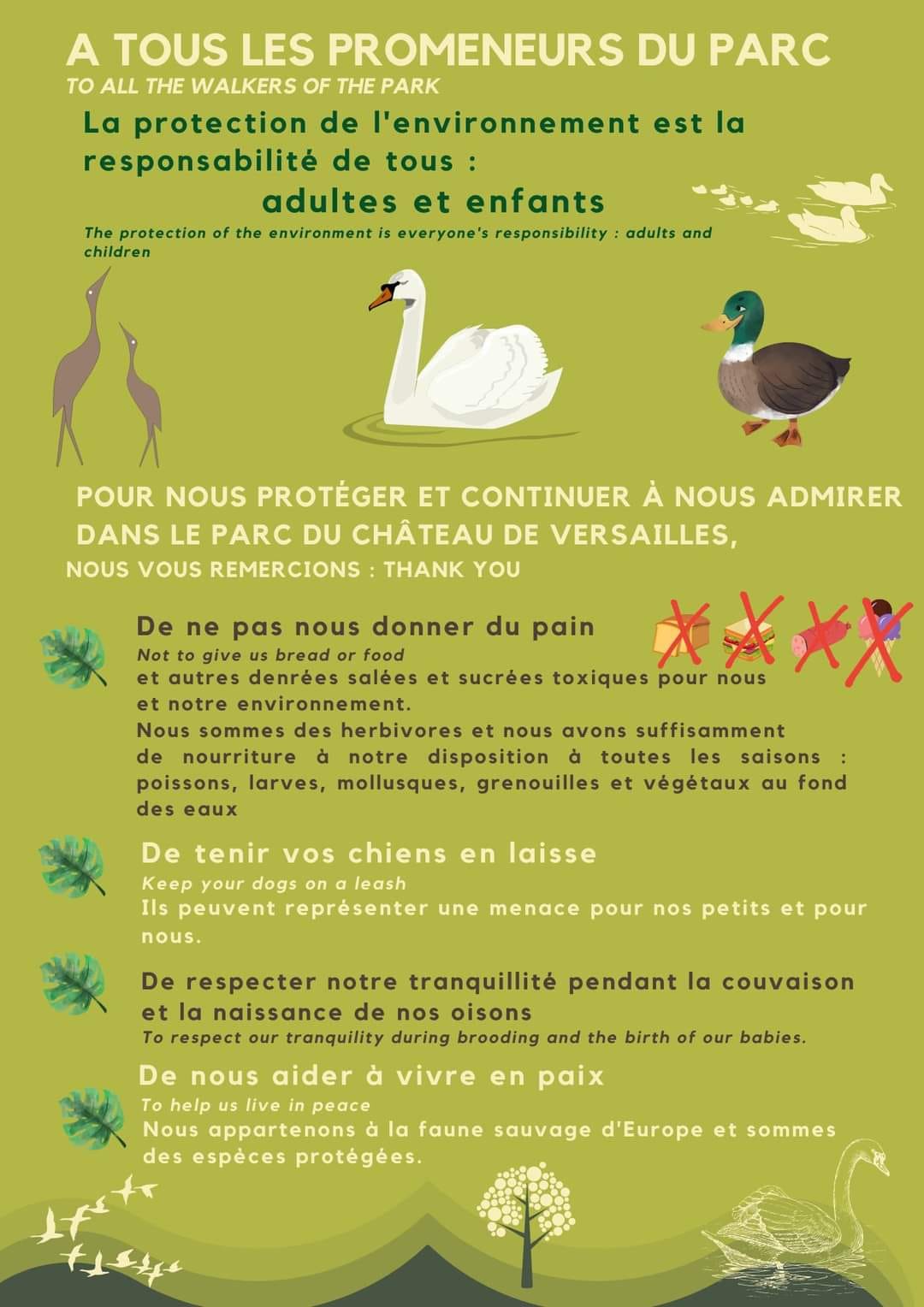 Swans are amongst the biggest birds, up to 15 kilos and 150cm. They can fly 70kph. Swans are grass (not bread) eaters, reaching down with their long necks under water to reach grasses on the bottom or sometimes they graze on a lawn. They make monogamous couples who make nests of sticks on the ground. Nearly each year in Versailles a pair sets up a nest on one of the corners of the Grand Canal and the grounds keepers protect them with a fence.
Swans are amongst the biggest birds, up to 15 kilos and 150cm. They can fly 70kph. Swans are grass (not bread) eaters, reaching down with their long necks under water to reach grasses on the bottom or sometimes they graze on a lawn. They make monogamous couples who make nests of sticks on the ground. Nearly each year in Versailles a pair sets up a nest on one of the corners of the Grand Canal and the grounds keepers protect them with a fence.
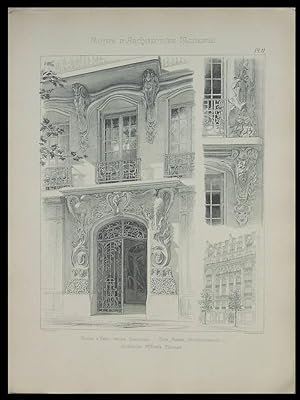
Swans in Paris on the façade of 30 ave Daumesnil.
Other mute and life-coupling birds are storks. France has these too.
Storks in Alsace
White storks (cigognes), with black tipped wings and red bills, live and reproduce in the easternmost French region of Alsace-Lorraine. They migrate to and from Africa each year, wintering primarily Egypt and Sudan. The journey takes 49 days, they cross 9,300 miles.
Here are some stork facts: these birds can be as large as two meters wide when flying, and can weigh between five to ten pounds. Their nests are so big they can weigh over 500 pounds putting serious weight on a roof and yet it is considered a privilege and lucky to have a stork choose your place for a nest. They return each spring to raise their young in the same nests, perched atop trees or iron stands the Alsatians have erected for them. They mate for life and can live for more than twenty years in the wild. They can have as many as 80-100 young in their lifetimes.
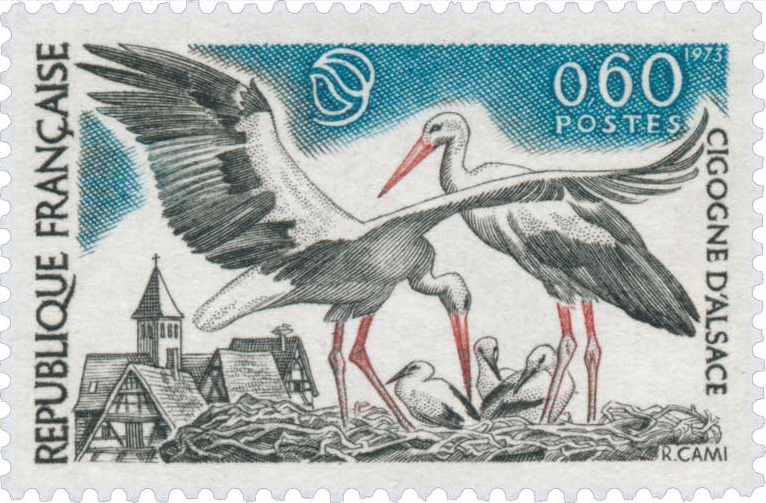
Thought of as joyful birds, storks are often seen preening each other, gathering in groups, and clattering their bills to make noise. But, despite that clattering, these birds are, like the swans, mute. Communication is done with wing flapping!
Storks are considered both harbingers of spring and oracles of the harvest in France. When there are a lot of storks in spring, the French believe it will be a good year; fewer storks mean more hardships. Vintners often say that the more storks there are, the better the grape harvest in autumn.
In the 1970s, the French realized that the stork population was in danger. So, in 1983, they began a repopulation program which has proved successful, resulting in around 600 nesting pairs in Alsace. 1000 storks have been born in the Parc de l’Orangerie in Strasbourg alone. NaturOParC, in Hunawihr, is a wildlife park which was instrumental to this program, and it continues to provide a safe haven for storks with open sanctuary for their nests, as well as an ongoing medical facility for storks that are injured or sick.

The third large white bird of France is the Egret
If you visit the French coastline, you’ll surely notice white egrets (aigrette garzette and grande aigrette) with elegant head plumes picking around the tidal flats and near oyster beds for food. Fashionable hats… nearly whiped them out in the 19th century but today there seem to be plenty.
The egret too is essentially silent. Sometimes in the winter when the food supply on the coast is limited, you’ll find them as far inland as where I live in the Yvelines. There they glean the fields for slugs (we’ve got plenty of those here), snails and frogs.
Read about the Rooster, a symbol of France
Enjoy this Speak Easy French-English matching puzzle on the theme of birds


